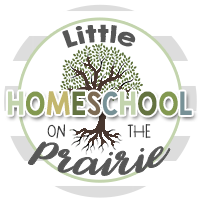May272015
May
27
2015
27 May 2015
The Postage Stamp Vegetable Garden Book Review
May 27, 2015
The
Postage Stamp Vegetable Garden by Karen Newcomb Book Review
This
classic gardening bestseller (over 500,000 copies sold) uses ecologically
friendly, intensive biodynamic methods to produce large amounts of vegetables
in very tiny spaces. Revised for an all new generation of gardeners, the 40th
anniversary edition includes brand new information on the variety of heirloom
vegetables available today and how to grow them the postage stamp way.
To accommodate today’s lifestyles, a garden needs to fit easily into a very small plot, take as little time as possible to maintain, require a minimum amount of water, and still produce prolifically. That’s exactly what a postage stamp garden does. Postage stamp gardens are as little as 4 by 4 feet, and, after the initial soil preparation, they require very little extra work to produce a tremendous amount of vegetables–for instance, a 5-by-5-foot bed will produce a minimum of 200 pounds of vegetables.
When first published 40 years ago, the postage stamp techniques, including closely planted beds rather than rows, vines and trailing plants grown vertically to free up space, and intercropping, were groundbreaking. Now, in an ever busier world, the postage stamp intensive gardening method continues to be invaluable for gardeners who wish to weed, water, and work a whole lot less yet produce so much more.
To accommodate today’s lifestyles, a garden needs to fit easily into a very small plot, take as little time as possible to maintain, require a minimum amount of water, and still produce prolifically. That’s exactly what a postage stamp garden does. Postage stamp gardens are as little as 4 by 4 feet, and, after the initial soil preparation, they require very little extra work to produce a tremendous amount of vegetables–for instance, a 5-by-5-foot bed will produce a minimum of 200 pounds of vegetables.
When first published 40 years ago, the postage stamp techniques, including closely planted beds rather than rows, vines and trailing plants grown vertically to free up space, and intercropping, were groundbreaking. Now, in an ever busier world, the postage stamp intensive gardening method continues to be invaluable for gardeners who wish to weed, water, and work a whole lot less yet produce so much more.
My
Thoughts:
Having a
functional garden in a small place can be difficult to accomplish if you don’t
know how to do it. Last year I went from having a large garden and converting
that space into raised garden beds. Needless, to say I found out that I lost a
lot of garden space. My back is happier but, the harvest is a bit saddening.
This is
a paperback book with 217 pages. There are a lot of charts on different types
of plants from seed germination to spacing, examples of many diagrams of garden
plot layouts, companion planting, and other illustrations throughout the pages.
Introduction 1
Chapter 1 Planning Your Postage Stamp Vegetable Garden 5
Chapter 2 The Postage Stamp Soil Mix 35
Chapter 3 Getting Your Ground Ready 43
Chapter 4 When and How to Plant 50
Chapter 5 Watering Your Postage Stamp Vegetable Garden 64
Chapter 6 Heirloom Vegetables and Herbs You’ll Love to Grow 68
Chapter 7 Plants That Like Each Other 165
Chapter 8 Controlling Pests, Diseases, and Critters 172
Appendix A How to Compost 186
Appendix B Seed Sources 195
Glossary 204
About the Author 211
Index 212
Chapter 1 Planning Your Postage Stamp Vegetable Garden 5
Chapter 2 The Postage Stamp Soil Mix 35
Chapter 3 Getting Your Ground Ready 43
Chapter 4 When and How to Plant 50
Chapter 5 Watering Your Postage Stamp Vegetable Garden 64
Chapter 6 Heirloom Vegetables and Herbs You’ll Love to Grow 68
Chapter 7 Plants That Like Each Other 165
Chapter 8 Controlling Pests, Diseases, and Critters 172
Appendix A How to Compost 186
Appendix B Seed Sources 195
Glossary 204
About the Author 211
Index 212
I liked the tips throughout the book
from what to do with certain plant diseases and the garden pest that eat at
your garden. If you need help planning your garden layout there is a good
amount of information available in this book. Four pages of container garden
with illustrations.
I also
learned something new about Heirloom seeds and keeping them pure. It’s too late
for me to do it this year but, next year I will be rethinking how I plant my
Heirloom seeds.
The
Appendix has an incredible list of seed sources that I was impressed with. A
nice glossary is also included.
This is
a wonderful resource for the beginner gardener or someone who has been
gardening for years. It would make a nice gift for someone who wants to begin
gardening and not quite sure how to begin.
Disclaimer:
I was provided a copy of this book from Blogging for Books- Waterbrook for free
in order to write this review. All thoughts and opinions are mine and were not
subject to editing from the publisher.
Labels:Book reviews
Subscribe to:
Post Comments
(Atom)


Search This Blog
Grab my button!

Followers
Powered by Blogger.
Homeschool Planet
HSP Free Offer Email for REVIEWERS
Popular Posts
-
This is my first time to try and blog through the alphabet. All kinds of amazing words start with the letter A. For some reason I keep comi...
-
Once upon a time somewhere on the Great Plains there was a homeschool mamma who was extremely frustrated with the constant grind and ...
-
This is a post that I did back in 2009. I have put the Lapbook on my 4share for others to use. This is the first time I have put one of my...
-
Just when I thought I have heard it all with homeschooling. I have finally got the most bizarre and rudest comment I have ever encountered ...
-
About the Book Book: Adult-o-Nomics: How To Nail It On Your Own Author: Tez Brooks Genre: Nonfiction (self-help) Release date: April 3...
Labels
20p12.1
4-H
About Me
American History
Ancient History
Autism
Beekeeping
Beekeeping 101
Bible
Blog Hop
Blogging
book
Book reviews
Camera Shots
Classroom
Coding
Curriculum
Disclosure Policy
Egypt
Entomology
Experiments
Family
Feast of Tabernacles
Field Trips
Free Printables
Garden
Geography
Giveaway
Giveaways
Hanukkah
Health
Hebrew
High School
History
homemade
Homemade Bread
Homemaking
homeschool
Homeschool crafts
Homeschooling
Honey Products for Sale
Honey Recipes
Horse Therapy
iPad & Apps
Israel
Just For Fun
Juvenile Arthritis
Kids
Lapbooks
Life Cycle
Life in general
Math
Medieval History
My kid said...
Organizing
Organizing/homeschooling
Our curriculum
Our Week Through the Lenses of a Camera
Passover
Photography
Prayer
Purim
Random Pictures from my Kids
Recipes
Review
Review Policy
Reviews
Rosh Hashanah
Science
Scripture
Sensory Processing Disorder
Shabbat
Shavout
Simchat Torah
Sonlight
Special Needs
Special Needs High School
Special Needs Product Reviews
STEAM
STEM
Stuff
Tish B’Av
tos
TOS Crew Reviews
Tu Bishvat
Viking History
Week in Review
Wordless Wednesday
Workboxes
Yom Ha'atzmaut
Yom Hashoah
Yom Hazikaron
Yom Kippur


















0 comments:
Post a Comment
Thank you for visiting my blog.